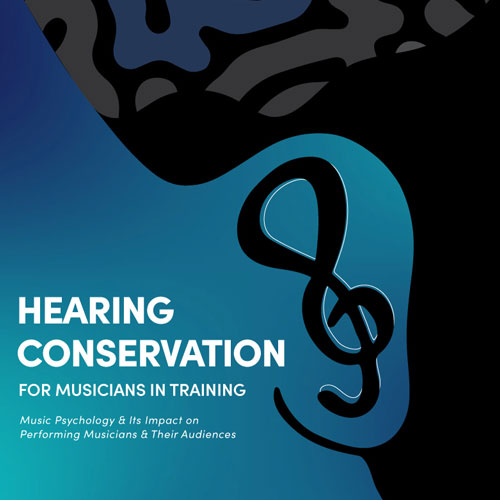The Magnolia hosted a panel discussion and a symphony performance by San Diego State University’s symphonic orchestra for audience members on March 3.
This event was organized by Scott Lipscomb, an SDSU music professor and former director of the School of Music and Dance. Lipscomb was joined on stage by panelists Sarah Creel, Laura Getz and Peter Torre to share their presentation entitled the “Hearing Conservation for Musicians in Training.”
The panelists, who study sound and its impact on humans, discussed a piece later performed by SDSU’s symphonic orchestra, Pyotr Tchaikovsky’s Symphony No. 6, a piece that includes a melody with a special element to it.
Lipscomb asked two groups of violinists to play the melody. Together, the melody sounded one way, but when each group played it alone it sounded another way.
“Tchaikovsky wrote the piece one way, but our brains say ‘nah,’” Lipscomb said. “So your brain takes over and says, ‘This that’s happening in the real world doesn’t make sense. Here’s what Tchaikovsky really meant.’”
The piece was also written just nine days before the composer died, a fact that audience members say gives it a lot of significance.
“Some people think that it was actually his suicide note,” said Ashlee Bacconi, a music student at California Lutheran University. “I think it was really just his way of expressing the way that he felt. I feel like this is a representation of his tragic mental state at the time.”
For the show’s finale, the orchestra would play the entire piece and audiences easily recognized the particular melody showcased during the panel presentation.
Lipscomb and Torre informed the audience of sound tests they will be conducting in the near future, testing SDSU students’ hearing before and after musical ensemble practices.
“I love the science behind music psychology,” Jared Halili Dallardo, a music student, said. “It was really fascinating just to find out that not only are other people really interested in this but people are doing full-on studies on it.”
When the floor was opened up for questions, the audience had multiple about their own hearing. The advice that panelists had for audience members included information regarding frequency and how different sounds affect us in different ways. For example, how loud music at concerts or parties can significantly damage our cochleae.
After the panel concluded, the dim blue lights shined over the stage as a new crowd came in to listen to SDSU’s music groups. The band ensemble came out dressed in all black, instruments shining, followed by conductor Shannon Kitelinger.
The band played four pieces, each receiving an eruption of applause. The last piece, called Angels in the Architecture by Frank Ticheli, caused the entire auditorium to fall silent and turn towards the balcony as a soloist projected her song.
For some audience members, this moment was one of the best of the whole show.
“It was so fitting how angelic she sounded, considering the name of the song.” said Em Carrillo, a senior at Santana High School.
The orchestra proceeded to play Tchaikovsky’s Symphony No. 6, demonstrating the melody that everyone who attended the panel recognized. SDSU’s group was conducted by Michael Gerdes, who asked the audience to please hold their applause until the very end of the fourth movement.
“Tchaikovsky clearly wrote this symphony with no applause until the end in mind,” Gerdes said. “Because he is going to rob all of you of the ending you think you want.”
According to Gerdes, Tchaikovsky questioned the ending he had written up until his death, wondering whether or not he had done the right thing by writing a slower ending as opposed to his usual theatrical one.
Audience members like Angel Maltonajo favor this decision.
“It was very raw Tchaikovsky as his final goodbye,” Maltonajo said. “That’s why it brought me to tears.”
He and his fellow audience members expressed that they were to return home satisfied with the information they had learned and the music they had been able to appreciate.
“Music is not (an) illusion, but revelation rather,” Tchaikovsky famously said. “Its triumphant power resides in the fact that it reveals to us beauties we find nowhere else.”
Coming from the man who created the musical illusion, his words speak to the beauty of the brain and the way it perceives music and everything else around it.
Read more about SDSU Arts Alive and upcoming events here.











